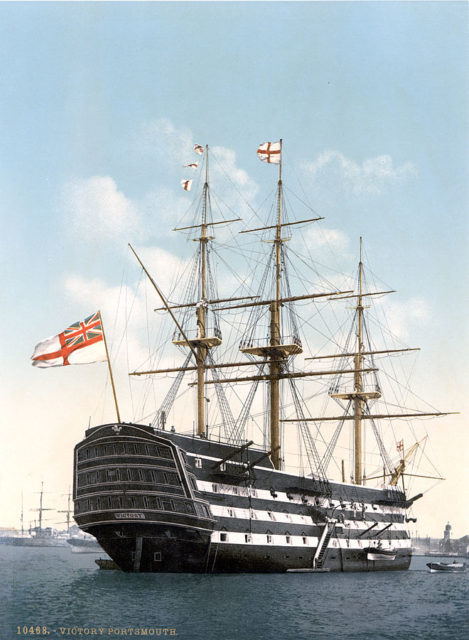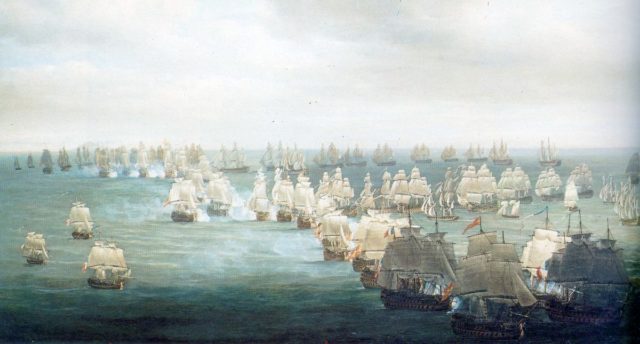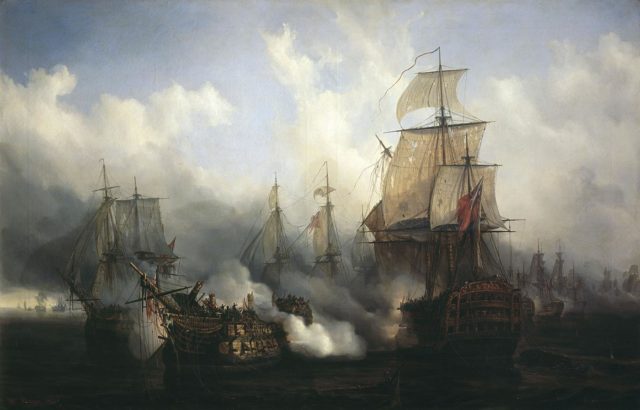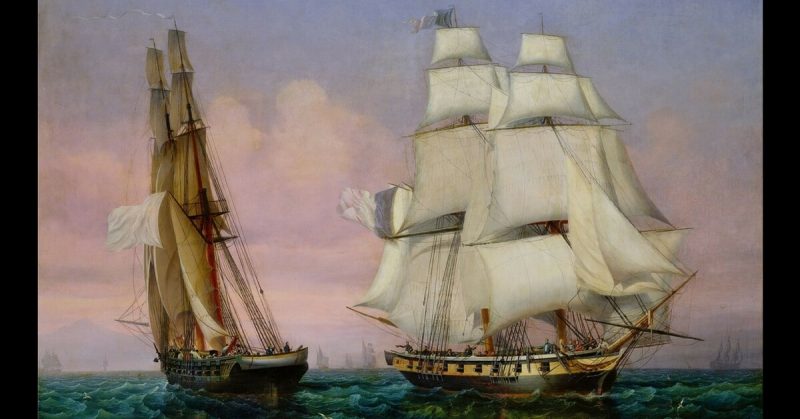One of the main reasons for Napoleon’s downfall was the inability of his fleets to defeat the British Navy. Here are ten reasons why the French lost so badly at sea.
A Navy in Decline
The French Navy had gone into decline since its strongest days in the 1770s during the American Revolutionary War. The subsequent upheaval of the French Revolution had caused problems for both the Navy and the docks maintaining it.
Although new ships were still being built, a powerful navy was about far more than just that. It was about maintaining, repairing, and upgrading existing vessels. It was about recruiting the crews to man them. In these regards, the French were falling into decline, partly through resting on their laurels and partly due to the massive administrative and financial upheaval of the revolution.
British Investment
The loss of its American colonies in the Revolutionary War had come as a huge blow to the British. With both its pride and its economic base hit by this event, the British Parliament set about investing in their Navy as the surest way of preventing further losses.
As a result, there was a significant increase in the number of ships of the line built throughout the 1780s. These were modern and powerful ships.
Critically, finance also went into building the infrastructure to support the fleet. Large new complexes of dry docks, dockyards, and supporting buildings were constructed at Plymouth and Portsmouth. Defenses were improved at overseas docks. Supply facilities were built and upgraded.

The French had a one-yard facility for every ten ships of the line. The British had one for every 7.5 ships and were building more.
It was these amenities which enabled the Royal Sovereign to have its copper sheathing renewed in less than a month. Shortly after, the previously slow ship outpaced the Victory at Trafalgar.
Channel Tides
The docks were all the more effective by a boon of nature – the sea along the British south coast. There were high tides twice daily and substantial spring tides once every two weeks. It made it easier to float or dock large ships. The French only had these tidal advantages at Brest and Rochefort.
Controlling the Baltic
Britain’s land position and naval power permitted it to control the best supplies of essential shipbuilding resources such as pine timber, hemp, and Swedish iron. Some of these resources, in particular, hemp, deteriorated if stored for long. They could be replaced with materials from elsewhere but they were not as good. Inferior substitutes from Spain led to breakages and accidents in stormy seas.
The Blockade
Throughout the Napoleonic wars, the French tried to maintain a naval blockade against British trade. However, due to their superior fleet, it was the British who were able to maintain effective blockades. Production was hampered at French shipyards as materials could not be brought in. From June 1803, they blockaded the port of Brest. The dockyard was forced to stop building, and by February 1805 its supply of coastal traffic had almost entirely shut down.
Quality of Sailors
The quality of sailors on board British ships steadily increased throughout the first decade of the wars.
In the early 1790s, the British Navy was as prone to accidents as any in the world. Her ships had collisions, lost masts in storms, and suffered structural damage in severe weather. It was not a reflection of unusually harsh conditions, but rather the quality of seamanship.
A decade later, the British were able to maintain a blockade out of sight of the French shore for months at a time without a single ship being damaged. Commanders had learned to work with the weather conditions, and crews had become experienced at working their vessels.

Manpower
This advantage was enhanced by the number of sailors the British could provide. Their Navy numbered around 110,000 men in 1805 and 140,000 eight years later.
The French and their allies struggled to find enough suitable men as crew. Conscription meant most of France’s young people were being drawn into army service in the many campaigns Napoleon fought. His sometime allies the Spanish struggled to find 65,000 sailors for a fleet which, if it had reached its planned greatness, would have needed 111,000.
Gunnery Tactics
The preferred British style of gunnery, known as the carronade, helped to secure their victories in battle.
The carronade, favored by Nelson and other British commanders, involved holding fire until they were at close range. It gave the enemy an advantage as they shot sooner, and great nerve was required from the British gun crews. It also conserved ammunition and the energy of the gunners, whose job of hauling cannon back across the decks to reload and fire was physically exhausting. The British spent their resources at close range, where they were most effective.

Better Guns
Britain’s superior gunnery tactics were coupled with excellent guns. The loss of the colonies had led to a renewed interest in shipbuilding; it had also resulted in closer scrutiny of the weapons on board. Thomas Blomefield, the Inspector of Artillery, oversaw the massive task of testing every gun in the Navy and replacing the weak ones.
Standards were brought in to ensure new guns were good enough. Any new ordinance was fired 30 times to ensure soundness before Ordnance would accept it; forcing manufacturers to reduce the sulfur content in their iron, producing less brittle guns.
Better Gunpowder
British gunpowder was also superior to that of the French. It was processed using saltpeter from India which had a greater explosive force. The British would not allow trade of it to the French.
With so many advantages of organization, resources, skills, and technology, Britain was assured of victory at sea.
Sources:
Roger Knight, “The Fleets at Trafalgar: The Margin of Superiority,” in David Cannadine ed. (2006), Trafalgar in History: A Battle and its Afterlife.
